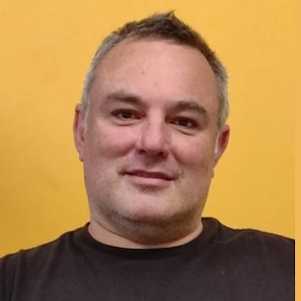Industrial and Urban Wastewater Treatment and Reuse
A special issue of Water (ISSN 2073-4441). This special issue belongs to the section "Wastewater Treatment and Reuse".
Deadline for manuscript submissions: closed (30 September 2021) | Viewed by 19070
Special Issue Editors
Interests: urban and industrial wastewater treatment technologies; wastewater reuse; solar technologies for wastewater treatment and disinfection; contaminants of emerging concern removal; pathogens removal; acute and chronic toxicity
Special Issues, Collections and Topics in MDPI journals
Interests: water and wastewater treatment and reuse; contaminants of emerging concern; advanced chemical oxidation processes; advanced biological treatment; advanced chromatographic analysis for the identification of microcontaminants in environmental matrices; assessment of the biological potency of microcontaminants and wastewater flows through the application of bioassays; antibiotic resistance in the aquatic environment; uptake of microcontaminants by crops during wastewater reuse
Interests: advance oxidation processes for wastewater treatment; novel developments for photo-Fenton process
Interests: drinking water treatment; wastewater treatment; advanced oxidation/reduction processes; carbocatalysis systems
Special Issues, Collections and Topics in MDPI journals
Special Issue Information
Dear Colleagues,
Energy and services demand, such as the access to drinking water, focused on social and economic development to improve the well-being and health of the population, has seen an increase in recent years. Such pressure exerted in the last century on natural sources has provoked severe sustainable problems in our planet, where, for 2020 a 50% increase on water consumption is foreseen, as well as that 2/3 of the world’s population will live under hydric stress conditions. These concerns, in combination with the phenomenon of water scarcity, are also increasing in Europe, in the context of a higher drought risk as a clear consequence of climate change. Seventy percent of fresh water in the world is consumed by agriculture activities and 19% by industries, which makes it imperative to find new alternative sources of water, such as the reuse of treated urban wastewater as well as the recycling of industrial wastewater in own production processes.
When focusing on the advanced remediation of industrial wastewater for reusing purposes, a new generation of oxidation technologies must be investigated and developed in combination or integrated with other advanced biological or membrane-based processes after defining specific treatment strategies. The presence of microcontaminants and pathogens also hampers the reuse of urban wastewater treated with conventional biological processes for irrigation in agriculture. Consequently, the potential economic value of this particular water is decreased. This situation strongly calls for the development of remediation techniques to limit the release of these substances in the environment. A series of innovative processes and process combinations with great potential benefit compared to state-of-the-art water technologies must be developed. In both applications, it is crucial to be aware that many arid and semi-arid countries facing water scarcity are well positioned to receive sufficient UV radiation from natural sunlight yearly, enhancing the potential for solar decontamination and disinfection applications. If the use of a renewable energy resource minimizes operating costs, investment costs are largely dependent on technological choices that are to be incorporated as soon as the process design begins, and more particularly at the full scale reactor design step.
The aim of this Special Issue is to gather innovative and highly specialized new treatment technologies and their combination/integration with other advanced processes for the remediation and reuse of industrial and urban wastewater for different final applications, mainly in the own industrial production chain or for irrgation activities. The use of solar energy as a renewable energy will have special consideration, focusing on giving sustainable solutions always based on the green chemistry principle.
Dr. Isabel Oller Alberola
Assoc. Prof. Despo Fatta-Kassinos
Dr. Antonio Arques
Dr. Inmaculada Velo Gala
Guest Editors
Manuscript Submission Information
Manuscripts should be submitted online at www.mdpi.com by registering and logging in to this website. Once you are registered, click here to go to the submission form. Manuscripts can be submitted until the deadline. All submissions that pass pre-check are peer-reviewed. Accepted papers will be published continuously in the journal (as soon as accepted) and will be listed together on the special issue website. Research articles, review articles as well as short communications are invited. For planned papers, a title and short abstract (about 100 words) can be sent to the Editorial Office for announcement on this website.
Submitted manuscripts should not have been published previously, nor be under consideration for publication elsewhere (except conference proceedings papers). All manuscripts are thoroughly refereed through a single-blind peer-review process. A guide for authors and other relevant information for submission of manuscripts is available on the Instructions for Authors page. Water is an international peer-reviewed open access semimonthly journal published by MDPI.
Please visit the Instructions for Authors page before submitting a manuscript. The Article Processing Charge (APC) for publication in this open access journal is 2600 CHF (Swiss Francs). Submitted papers should be well formatted and use good English. Authors may use MDPI's English editing service prior to publication or during author revisions.
Keywords
- Industrial wastewater
- Urban wastewater
- Advanced oxidation processes
- Integrated technologies
- Membrane systems
- Advanced biological treatment
- Contaminants of emerging concern
- Pathogens
- Nutrients recovery
- Renewable energy








